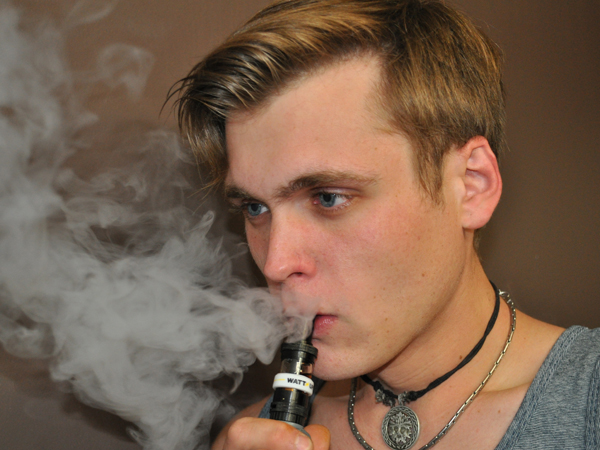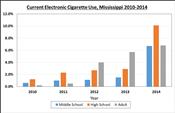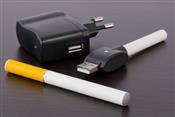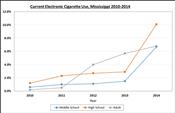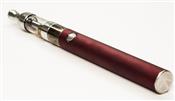Electronic cigarettes: harmless hobby or gateway drug?
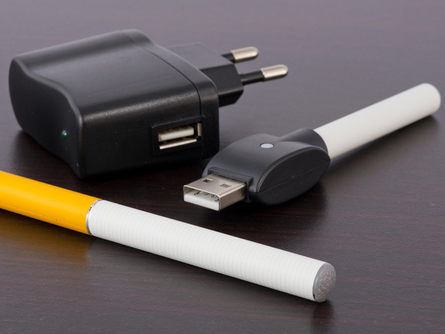
Published in News Stories on December 03, 2015
One of the nation's greatest public health achievements has been the decline of cigarette use. According to the Centers for Disease Control, almost half of Americans smoked in the 1960s, and in 2014, only 16.8 percent smoked. An emerging product could undo that progress.

Payne
“Electronic cigarettes could be a new pathway to nicotine addiction,” said Dr. Thomas Payne, professor of otolaryngology and communicative sciences at the University of Mississippi Medical Center. As director of the ACT Center for Tobacco Treatment, Education and Research, he studies the psychosocial aspects of tobacco use and helps people quit.
Electronic cigarettes are also known as electronic nicotine delivery systems (ENDS), e-cigarettes, e-cigs, vape pens or personal vaporizers. Popular brands include Blu and NJOY. They are available in a growing number of specialty shops in the Jackson area as well as convenience stores. In 2014, 6.8% of Mississippi adults were current users, a number that has risen each year since 2010.
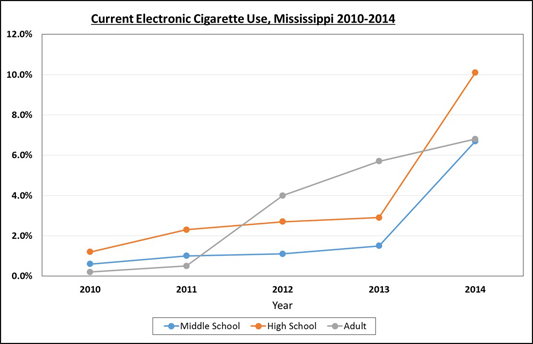
Current use is defined as using an electronic cigarette at least once in the 30 days prior to the survey date. Data Source: Mississippi Youth Tobacco Survey, Dr. Robert McMillen, Mississippi State University
The first e-cigarette was patented in 1965, but lacked popularity because conventional smoking was still commonplace. The modern version was patented in China in 2003 and arrived in the U.S. in 2007. By 2013, vaping was a billion-dollar industry.
“Nicotine is the most addictive of substances,” said Dr. Xiu Liu, associate professor of pathology at UMMC. He studies nicotine addiction and relapse in rats.
“Nicotine gives smokers a euphoric feeling, which reinforces smoking behavior,” said Liu. “After chronic use, nicotine desensitizes receptors in the brain. In response, the brain produces more receptors. When someone quits smoking, all of those receptors are waiting for nicotine. When none comes, withdrawal symptoms and tobacco craving occur.”
These symptoms include depression, fatigue, insomnia, weight gain and irritability, said Payne.
Nicotine is toxic in high doses but poses few health risks on its own, Liu said. Burning tobacco is what releases most of the 8,000 chemicals identified in cigarette smoke.
E-cigarette proponents tout the reduced harm compared to tobacco products. In addition, combustible cigarettes and other tobacco products are associated with higher risk of cancer and cardiovascular disease, while e-cigarettes are not. They likely contain less nicotine and fewer toxins. Some experts view e-cigarettes as a potential tool to quit smoking, like nicotine gum and patches.
When a user puffs on an e-cigarette, airflow activates a heating element that vaporizes a mix of water, nicotine, propylene glycol and/or glycerin and flavoring agents, creating a smoke-like vapor. Some have a small glowing light on the tip like the burning end of a cigarette, providing a smoking experience without tobacco.
Jeramie Britt, 21, of Brandon, uses an e-cig.
Payne said that e-cigarettes are not FDA-approved tobacco cessation aids, but some people use them as such. The ACT Center does not promote them for this purpose. He says most studies on their efficacy have shown no value as a cessation tool, while a few have reported short-term successes followed by relapse.
Lack of regulation is the biggest concern surrounding e-cigarettes, Payne said. Because nicotine is derived from tobacco, the devices fall under the FDA's jurisdiction. The agency issued a regulatory proposal in 2014, but it has not been finalized.
Anyone can create nicotine refill solutions, called e-juice or vape juice.
“Depending on the extraction process, other components from tobacco can end in vape juices, and this can vary from one manufacturer to another. The FDA is wise to explore this,” said Payne.
Payne is referring to the FDA's Tobacco Centers of Regulatory Science program (TCORS). Institutions across the country are conducting research to inform policy decisions, including those related to e-cigarettes. Payne and UMMC are working in conjunction with the American Heart Association and other institutions to improve anti-tobacco campaign messages.

McMillen
Dr. Robert McMillen is an associate professor of psychology at Mississippi State University and a member of MSU's Social Science Research Center. He calls the increasing e-cigarette use in Mississippi and the nation concerning, especially among teenagers and young adults.
“About half of adolescents who used e-cigarettes in the last thirty days were never smokers,” said McMillen. He is head of the Mississippi Tobacco Data project, which added ENDS to its annual surveys in 2010.
In 2014, 10.1% of Mississippi youth reported using e-cigarettes, a number that has increased quickly. Meanwhile, traditional cigarette use stands at 12.2%.
Unlike conventional cigarettes, e-juices come in many flavors like fruits, beverages and candy (federal laws limit cigarettes to menthol). These flavors may make vaping more attractive to youth, encouraging a new generation of users.

Liu
Liu said one of his projects could be relevant to the emerging popularity of e-cigarettes. He studies the contribution of menthol to smoking behavior and addiction. He thinks the flavor acts as a cue which could reinforce smoking habits. The same could be true for flavored e-cigarettes.
Little data exist on the long-term safety of vaping. Researchers are studying the chemical components. The vapor-producing chemicals propylene glycol and glycerin are safe as liquids but may be dangerous when inhaled. Studies found that e-juice contains few of the carcinogens found in combustible cigarettes, but some products contain formaldehyde, toxic carbonyls and heavy metals in higher concentrations.
Payne says the health risks associated with the 1,000-plus flavorings used in e-juices are largely unknown, although early research has identified some toxic elements.
“By the 1930s, there was already evidence that smoking was unhealthy,” said McMillen. “By the time e-cigarettes are fully vetted, they are likely to be deeply embedded in culture.”
Until the FDA finalizes its rules, state and local governments may enact their own laws.
Of Mississippi's 116 smoke-free communities, 67 have e-cigarette restrictions, including Flowood and Brandon. Jackson, Clinton, Ridgeland and Madison do not limit public use. Mississippi prohibits tobacco sales to individuals under 18, including e-cigarettes.
UMMC became a smoke-free campus in 2007, the same year e-cigarettes arrived in the United States. The policy was later amended to include ENDS.
McMillen said proposed regulations to make the e-juice cartridges childproof like other consumer products will probably be approved soon. One cartridge may contain as much as 40 mg of nicotine, nearly four times the lethal dosage for a toddler. Prior to 2014, one accidental e-juice ingestion was reported to UMMC; there have been 39 since then.
Marketing also has a regulatory loophole. E-cigarette manufacturers are not required to observe the laws that have restricted tobacco ads since 1971, so they can advertise on television and radio. However, they cannot be marketed for smoking cessation. At least one study suggests that former smokers who viewed e-cigarette ads were more likely to relapse.
McMillen wants to see advertising limited in a similar way to tobacco.
“I would like to see marketing restricted to confirmed smokers. We do not need to have e-cig ads shown indiscriminately on TV,” he said.

More information:
Do you want help quitting smoking? Learn more about UMMC's ACT Center.
For statistics on tobacco and e-cigarette use in Mississippi, visit the Mississippi Tobacco Data website.



